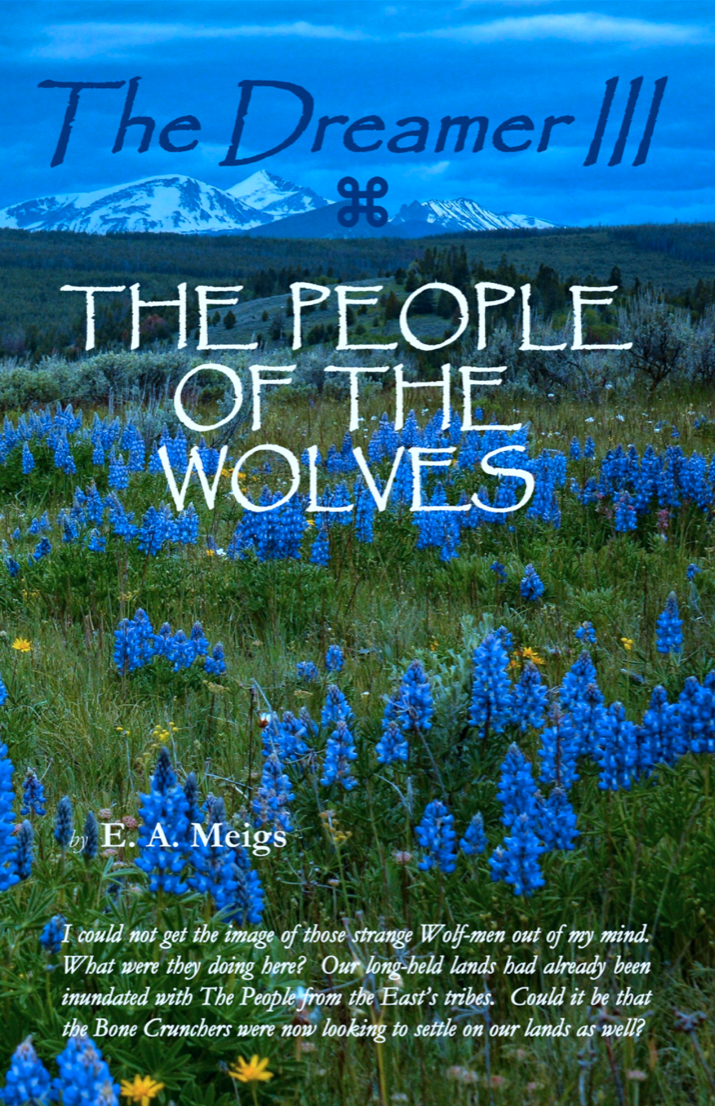
Find us on Instagram @ dreamer_books_an_ice_age_saga or
Total Page Visits: 2900 |

Total Page Visits: 2900 |
The latest installment in the ongoing Ice Age saga is still on-track to be published this summer! Embark on a journey to an ancient land; to a time when life was broken down to its most basic elements and survival depended upon strength of mind and body, and the strength of relationships with those around you.
Edit: The Dreamer VI ~ The Outsiders was published in July 2021! Find it in hardcover, paperback, and eBook at https://dreamerliteraryproductions.com/

As the owner of a website and a number of social media pages, I have had the pleasure of (virtually) meeting a lot of people. I enjoy talking with these folks, even if we don’t always agree. Polite discourse can be mentally stimulating and educational. Theories come and go. Ideas once considered to be rock-solid may be disproved. There are many things we will never know about early humans, but it’s always fun to speculate about those who tread this earth before us. It was during one of these recent conversations when a link to popular site was sent to me, by way of backing up his argument. If the page had been thoroughly researched and up-to-date (its sole citation was a paper from the 1860s), that would have been fine, but sadly, despite its popularity, it was a very poor source of information.
I have a systematic way to identify and assess research materials. I was fortunate to have held a managing editor position for an academic journal. It taught me about the academic publication process, which was quite a different experience as compared with the general media. This was a peer-reviewed journal that only published a small percentage of its submissions. Papers were carefully considered for their academic merit and whether or not the subject was current (or had an angle worth revisiting), but another important aspect was the references. How old were the papers that were cited? Were they published in a reputable source? You see, in the “publish or perish” academic world, a lot of papers are submitted to journals, leaving the staff to sift through for content that is both fresh and insightful.
Nowadays I devote many hours to research for my books; over a thousand hours per year, in fact. I read everything I can find on the subjects of anthropology, osteoarchaeology, paleoanthropology, natural history, geology, ancient survival skills, and more. I assess my sources in the same way I assessed submissions. Is it current information? Are the references recent/credible? As mentioned in the video included on this blog, many of best resources are academic in nature. Not just published papers, but there are many wonderfully informative websites such as:
On the flip-side, there are also many popular websites – some associated with well-known entities – that may contain odd bits of misinformation. The field of paleoanthropology grows by leaps and bounds (especially during the last few years), so it requires a certain determination to stay on top of the constant influx of discoveries and new theories.
While one can forgive writers of fiction for using creative license as long as it is identified as fiction, it is unfortunate that entertainment articles are often put forth as serious science. You don’t have to be writing a paper or book to benefit from perusing the best resources, but I do think it’s important to consider the quality of the materials that will help you formulate your own ideas. Not that I mean to say you should shun any article that isn’t strictly scientific; there are many “fluff” pieces that contain good information, but you should go into it knowing it for what it is. If the article is entertaining and contains a few nuggets of real info, that’s great!
***
In the future I will be writing another blog about my non-academic research. After all, there are many facets of history that are not covered by science, alone. There is much to be known about primitive life that is best learned from those who practice those ancient skills!
Header image: graphics by E. A. Meigs, cover photos by Paula Krugerud.
Venus figurines have been discovered throughout much of Eurasia, most dating between 11,000 to 40,000 BCE*. These saucy ladies have been the subject of much study and conjecture. Were they fertility symbols? Some sort of Mother Earth/Mother Nature goddesses? Or were they merely meant to depict womanhood in full flower (so to speak); a visual testimony to the artist’s admiration for the female form in all her glory? We can only guess, but it is fun to speculate on the motive(s) and mindset(s) of their creators.
*BCE = Before Common Era
(Venus Figurine in header by Neanderthal Joe)
Total Page Visits: 1985 |

The Eurasian Cave Lion (Panthera spelaea) is known to us mostly through its fossilized skeletal remains and the exquisitely detailed imagery left behind by early humans on cave walls. The fossils tell a tale of a large predator, somewhat bigger than today’s African lions. They may have been as much as 11 and a half feet in length from their nose to the tip of their tail, and reached weights of up to 880 pounds. Male cave lions are depicted without manes in cave art. Some of the ancient paintings seem to show faint striping on parts of the cave lion’s body.
These impressive animals are included in several of the Dreamer Book Series: An Ice Age Saga novels; as they surely would have been well known to Ice Age humans and been a source of awe and -at least occasionally- terror, to those who encountered them. This versatile and fearsome hunter was known to inhabit most of Eurasia and the very northwestern parts of the North American continent.
In 2015 two cave lion cubs were discovered where they had been buried in a landslide in Siberia, and were preserved in permafrost for tens of thousands of years. The approximately two week old kittens were were an astounding find and have done much to contribute to our understanding of these animals. A well-preserved third cub, about six to eight weeks old at time of death, was also found in permafrost in 2017. Lastly, a fourth cub was located in 2018. It was found near the 2017 cub; close enough to make scientists think that it might have been a sibling. There is speculation that future digs might reveal the existence of more siblings, or possibly even the remains of the cubs’ mother.
The most recent Eurasian cave lion remains have been dated to about 14,000 years *BCE. They are believed to have gone extinct by 10,000 years *BCE.
*BCE = Before Common Era.
Total Page Visits: 3111 |
I’m pleased to announce that the first draft of the fourth book in the on-going ice age saga “The Dreamer IV ~ The Cave of Bones” is complete! Now comes the editing process! The Dreamer IV is due to be released in the summer of 2019. Read more about this and other books in the series at: https://dreamerliteraryproductions.com/

The Dreamer IV ~ The Cave of Bones

I am pleased to announce that my on-going saga has made the news! The Cape Cod Chronicle’s Debra Lawless has penned a nifty half-page article which appears in this week’s (Nov. 29, 2018) issue! I’m so excited!
I love to pack up my books and send them off into the world. There, I hope they will reach into the minds and hearts of others, and spur their imaginations to experience life in a distant past with all the drama and adventure, and perhaps most surprisingly, find that humans have struggled with many of the same problems throughout the millennia.

Photo by E. A. Meigs, cover photos by Paula Krugerud.

Graphics by E. A. Meigs, cover photo by Paula Krugerud.

Cover photos in header and blog by Paula Krugerud.

Cover photos by Paula Krugerud.
WHERE TO BUY THIS AND OTHER DREAMER BOOKS

I am pleased to announce that the first draft of “The Dreamer III ~ The People of the Wolves” is complete. Now begins the editing process!

Cover photo by Paula Krugerud.
This is the first anniversary of the day I released the first book (The Dreamer ~ The Beginning) in The Dreamer Book Series! The second book (The Dreamer II ~ The Gathering) was already undergoing editing at that time and has since published in July of this year. The third (The Dreamer III ~ The People of the Wolves) has almost completed the 1st draft stage and will be available in 2018.
Graphics and background photo by E. A. Meigs.
Cover photos by Paula Krugerud.
The Dreamer II – The Gathering continues the saga as Tris’s sheltered world expands when The People from the East (the Cro-Magnon) begin to settle in ever-increasing numbers on the long-held territories of the Old Ones (Neanderthals). Discord develops as they come into serious competition for the same limited resources…



The second novel in the ice age saga book series: The Dreamer II ~ THE GATHERING is now in the hands of the copyeditors!
The book’s cover, which features the magnificent imagery of Paula Krugerud Photography, is still in development, but will likely look something like the one shown here, above.
The Dreamer II ~ THE GATHERING is expected to be released in July 2017.
The Dreamer III ~ THE PEOPLE OF THE WOLVES is underway and will be released in 2018.
The Dreamer – THE BEGINNING contains a frontispiece featuring the title character, Tris, and 29 sketches of the animals mentioned within the text of the book. These drawings were shrunken so as to fit on the pages and in doing so, much of the detail was lost. For those who would like a larger view of the original pictures, here’s a small sampling:





All artwork by E. A. Meigs.